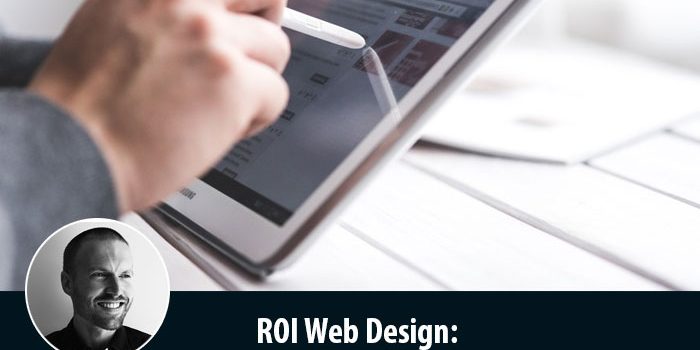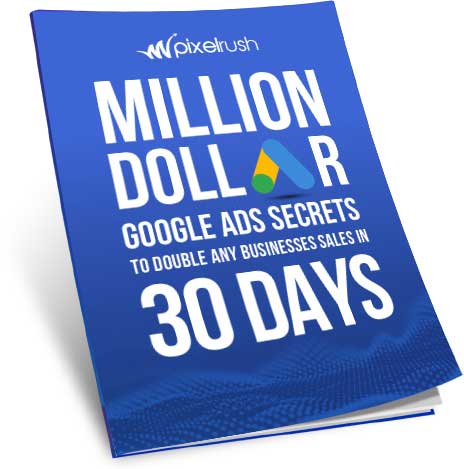The internet has come a long way in terms of its maturity and because of that online business has become much more fierce. Building a website is no longer about simply “turning up” and if you’re looking for return on investment web design you’re going to have to work a little harder.
These days it seems that everybody can build a website from your mad aunt’s fifth cousin, family members or I’ve even seen business owners rolling up their sleeves and taking a crack. While I believe most people with a bit of time of their hands could build a site there can be a significant difference when it comes to developing a website that generates sales and leads.
Some questions you should ask yourself before you start engage in your web design project:
- What is a conversion through your website worth to you?
- What action do you want visitors to take?
- What would you search for to find services like yours?
- What questions are your visitors asking about services like yours?
- Do I have the time to invest in doing this myself?
- How much am I prepared to spend to have someone build it for me.
- How do you plan on marketing the site once it goes live?
- Do you want to use paid or organic traffic to market it?
The questions above will help you understand whether you or your chosen developer has the skillset to develop the site that you desire. Of course you can have everything for nothing so finding a price and budget that fits your business is important as well.
Common Mistakes You Should Avoid
Building it Yourself
As a business owner your focus should be on running your business. You don’t need the headache and countless hours of time spent trying to code (god help you), fumbling with a clunky template or simply figuring out the basics to get you started. It’s very easy to sink weeks, if not months, into your first website and if you’re a new business this really makes no sense. Unless web design is your business then your time is best spent focusing on acquiring new business and in doing so you’ll have the money to invest in a quality web designer.
Focusing on Pretty
It’s often the case that business owners focus on making the prettiest looking website, trying to use clever catch phrases and overusing images that have no relevance to your brand or service. Pretty websites don’t sell, instead you want a website that sends the right message to your target audience, a clear call to action and is optimised for conversions. Don’t get me wrong you can have both a good-looking website and gain conversions but always ensure your design makes sense rather than because “it looks nice”. Some examples of this might be:
- Using sliders that use all the screen land screen space (above the fold) – read this article, why sliders suck
- Overloading your site with images i.e. I want as many images as possible
- Focusing on pretty colour i.e. I think the links should be pink instead of green. Color is important but base it on metrics, data and testing.
- Using pointless widgets that distract visitors i.e. weather, social, games
Ask yourself what action do you want visitors to take when they arrive to your site, make this your priority. We previously wrote about how you can generate more leads from your website.
Not Considering SEO
I often hear business owners tell me “I’m not focusing on SEO until later” or “We don’t need SEO right now” which doesn’t make any sense. It’s likely your competitors are focusing on SEO and if they get too far ahead they’ll be almost impossible to catch. Any business that are interested in generating a return for their website (who wouldn’t?) needs to consider SEO, and organic traffic, in the initial web design otherwise your site may never be found. SEO web design will provide your website with a structure that optimises SEO and all of your services with primary and long tail keywords allowing you to target high and low competition keywords.
By structuring your website around people searching with the right intent, i.e. to buy your services or products, you’ll ensure that you give yourself the highest possible opportunity to return on your new web design. SEO also needs to be heavily considered when upgrading a website from old design to new and ensuring that any previous inbound links are not lost. You don’t want to launch a brand new website only to find that your old rankings have been significantly reduced. New websites need to consider the old website structure and redirect visitors and links accordingly.
Delivering The Wrong Message
Many websites I view are filled with lots of fluffy cuddly comments like:
- We provide the highest quality services in our industry
- We want your business
- We treat your business like our own
The problem with generic comments like this is that you’re no different to any of your competitors using the same terminology. It’s not about you it’s about your customers and what you can do for them. Your customers what to know “why” and “how” you do the above statements. If you’re serious about generating income from your website then you need to get serious in the type of message you send to your visitors. You want to address things such as
- What services do you provide
- What is breakdown of each service
- What do you provide in return i.e. reports, hours, modifications etc.
- Why are you services better than your customers.
- How will the engagement work
- What packages are on offer
- Can services be tailored
- Customer testimonials
- Examples of work and results
If you can provide all the above in a clear and concise format you’ll be well on your way to converting more of your traffic. Your web designer may be able to assist you with your content and talk about what is required however the business owner has the experience that will best resonate best with their target client. The business should be heavily involved with developing content that sends the right message and ensures that you stand out amongst your competitors.
Seeking Perfection
It’s completely reasonable to seek a high level of standard from your web design, it’s the face of your business at the end of the day. However striving for perfection can ultimately suffocate the building process and in turn result in a loss for your business, even if it’s not a visible loss. I say loss because you either a) don’t have a website or b) you’re using an outdated or broken website, while your new site is built, that isn’t converting for your business.
Your aim should be to get to version 1 which turns an idea into something realistic. Version 1 should be the best you can produce given your time, knowledge, budget and experience. What you’ll find is that once version 1 is developed it’s the ongoing improvements that continuously refine your message, conversions, organic traffic and more. If you don’t have a website it will be incredibly difficult to generate money online so ensure that you get it to version 1 so that you can start developing content and promoting it.
Web design is continuous and is no longer set and forget.
Not adding Content after Launch
This is probably the single biggest reason for why business fail to generate enquiries from the website post launch, nobody has a reason to come and visit. Google loves authoritative websites and websites that producing great content on a regular basis. If you don’t produce content it’s unlikely you’ll increase rankings in a competitive market. Onsite optimisation will get you so far but then you’ll need to have ongoing marketing to attract visitors to your site which can be done in a variety of different ways.
Let’s Summarise
If you want to gain a return for your website design then you need to focus on what is important to your business and in most cases that is sales and enquiries. If that is the case then ensure that your website is optimised for conversions with a clear action that you want your visitors to take.
- Understand your website goals and work backwards
- Use design elements that will sell your message and convert traffic into goals.
- Ensure that your web developer is developing your site on an optimised SEO structure. If your web designer doesn’t provide SEO then speak with someone who can provide this structure for you.
- Create content that resonates with your target audience
- Identify services that require individual service pages. i.e computer sales vs technical support
- Remember that the longer it takes to get to version 1 the more sales you may be losing.


